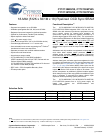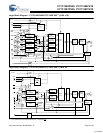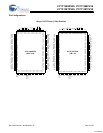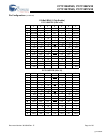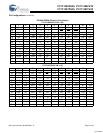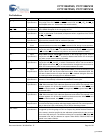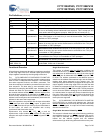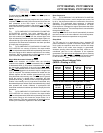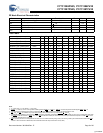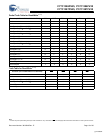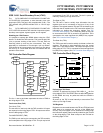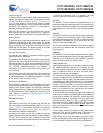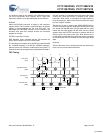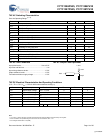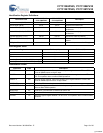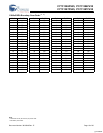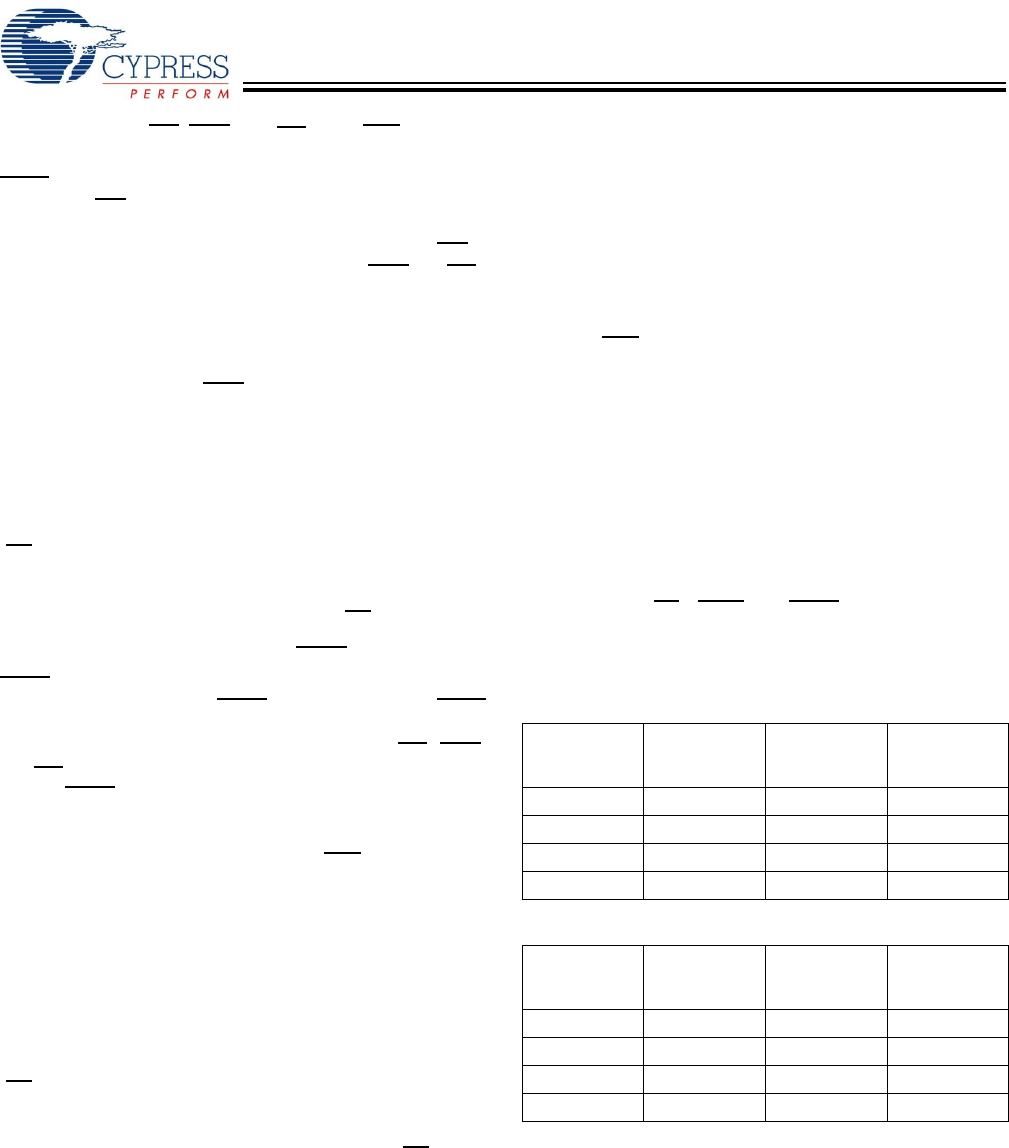
CY7C1386DV25, CY7C1386FV25
CY7C1387DV25, CY7C1387FV25
Document Number: 38-05548 Rev. *E Page 8 of 30
The write signals (GW
, BWE, and
BW
X
) and ADV inputs are
ignored during this first cycle.
ADSP
triggered write accesses require two clock cycles to
complete. If GW is asserted LOW on the second clock rise, the
data presented to the DQ
x
inputs is written into the
corresponding address location in the memory core. If GW
is
HIGH, then the write operation is controlled by BWE and BW
X
signals.
The CY7C1386DV25/CY7C1387DV25/CY7C1386FV25/
CY7C1387FV25 provides byte write capability that is
described in the write cycle description table. Asserting the
byte write enable input (BWE
) with the selected byte write
input will selectively write to only the desired bytes. Bytes not
selected during a byte write operation will remain unaltered. A
synchronous self timed write mechanism has been provided
to simplify the write operations.
The CY7C1386DV25/CY7C1387DV25/CY7C1386FV25/
CY7C1387FV25 is a common IO device, the output enable
(OE
) must be deasserted HIGH before presenting data to the
DQ
inputs. Doing so will tri-state the output drivers. As a safety
precaution, DQ are automatically tri-stated whenever a write
cycle is detected, regardless of the state of OE.
Single Write Accesses Initiated by ADSC
ADSC write accesses are initiated when the following
conditions are satisfied: (1) ADSC
is asserted LOW, (2) ADSP
is deasserted HIGH, (3) chip select is asserted active, and (4)
the appropriate combination of the write inputs (GW, BWE,
and
BW
X
) are asserted active to conduct a write to the desired
byte(s). ADSC triggered write accesses require a single clock
cycle to complete. The address presented is loaded into the
address register and the address advancement logic while
being delivered to the memory core. The ADV
input is ignored
during this cycle. If a global write is conducted, the data
presented to the DQ
X
is written into the corresponding address
location in the memory core. If a byte write is conducted, only
the selected bytes are written. Bytes not selected during a byte
write operation will remain unaltered. A synchronous self
timed write mechanism has been provided to simplify the write
operations.
The CY7C1386DV25/CY7C1387DV25/CY7C1386FV25/
CY7C1387FV25 is a common IO device, the output enable
(OE
) must be deasserted HIGH before presenting data to the
DQ
X
inputs. Doing so will tri-state the output drivers. As a
safety precaution, DQ
X
are automatically tri-stated whenever
a write cycle is detected, regardless of the state of OE.
Burst Sequences
The CY7C1386DV25/CY7C1387DV25/CY7C1386FV25/
CY7C1387FV25 provides a two-bit wraparound counter, fed
by A
[1:0]
, that implements either an interleaved or linear burst
sequence. The interleaved burst sequence is designed
specifically to support Intel Pentium applications. The linear
burst sequence is designed to support processors that follow
a linear burst sequence. The burst sequence is user selectable
through the MODE input.
Asserting ADV
LOW at clock rise will automatically increment
the burst counter to the next address in the burst sequence.
Both read and write burst operations are supported.
Sleep Mode
The ZZ input pin is an asynchronous input. Asserting ZZ
places the SRAM in a power conservation sleep mode. Two
clock cycles are required to enter into or exit from this sleep
mode. While in this mode, data integrity is guaranteed.
Accesses pending when entering the sleep mode are not
considered valid nor is the completion of the operation
guaranteed. The device must be deselected prior to entering
the sleep mode. CE
s, ADSP, and ADSC must remain inactive
for the duration of t
ZZREC
after the ZZ input returns LOW
.
Interleaved Burst Address Table
(MODE = Floating or VDD)
First
Address
A1: A0
Second
Address
A1: A0
Third
Address
A1: A0
Fourth
Address
A1: A0
00 01 10 11
01 00 11 10
10 11 00 01
11 10 01 00
Linear Burst Address Table (MODE = GND)
First
Address
A1: A0
Second
Address
A1: A0
Third
Address
A1: A0
Fourth
Address
A1: A0
00 01 10 11
01 10 11 00
10 11 00 01
11 00 01 10
[+] Feedback



